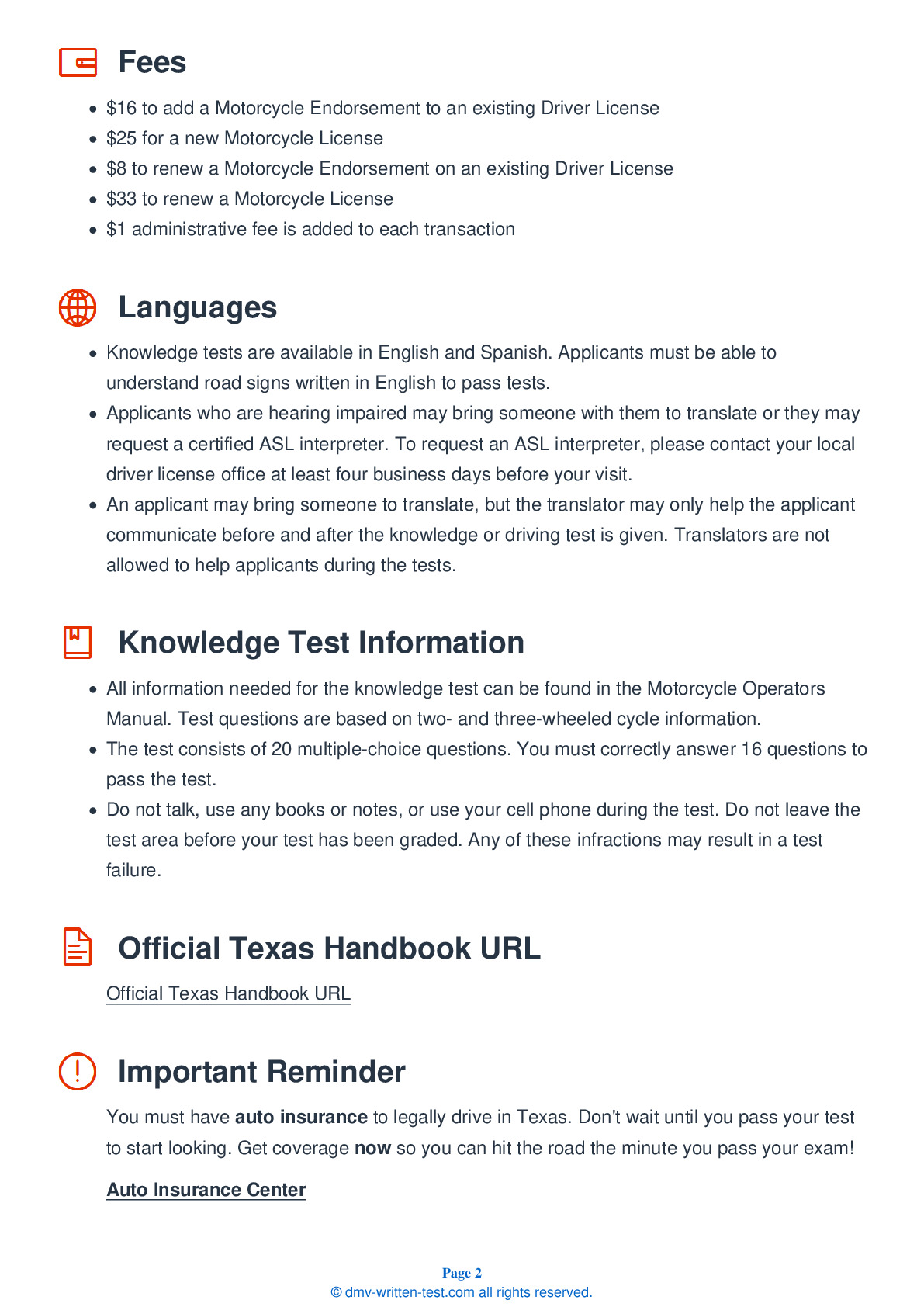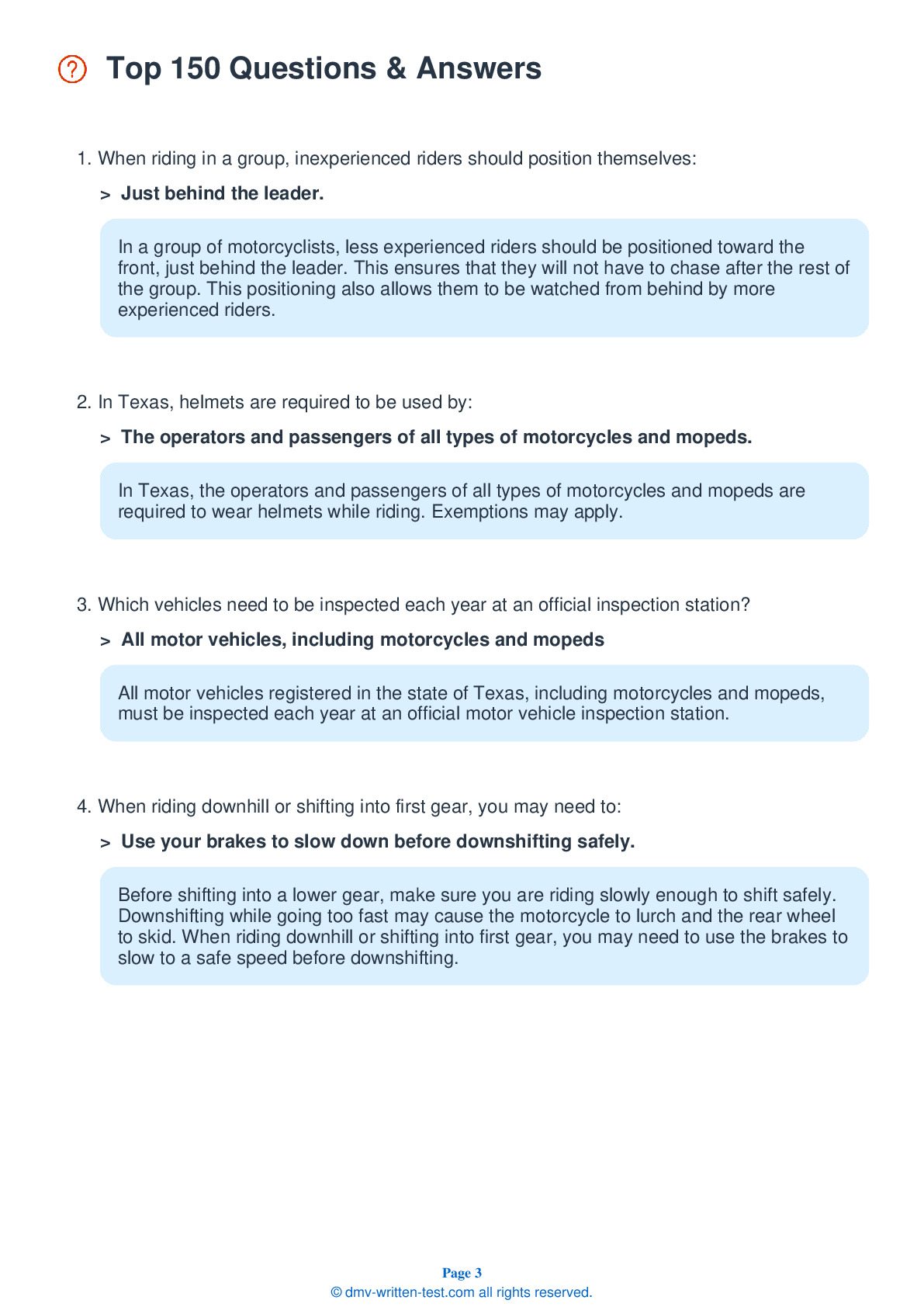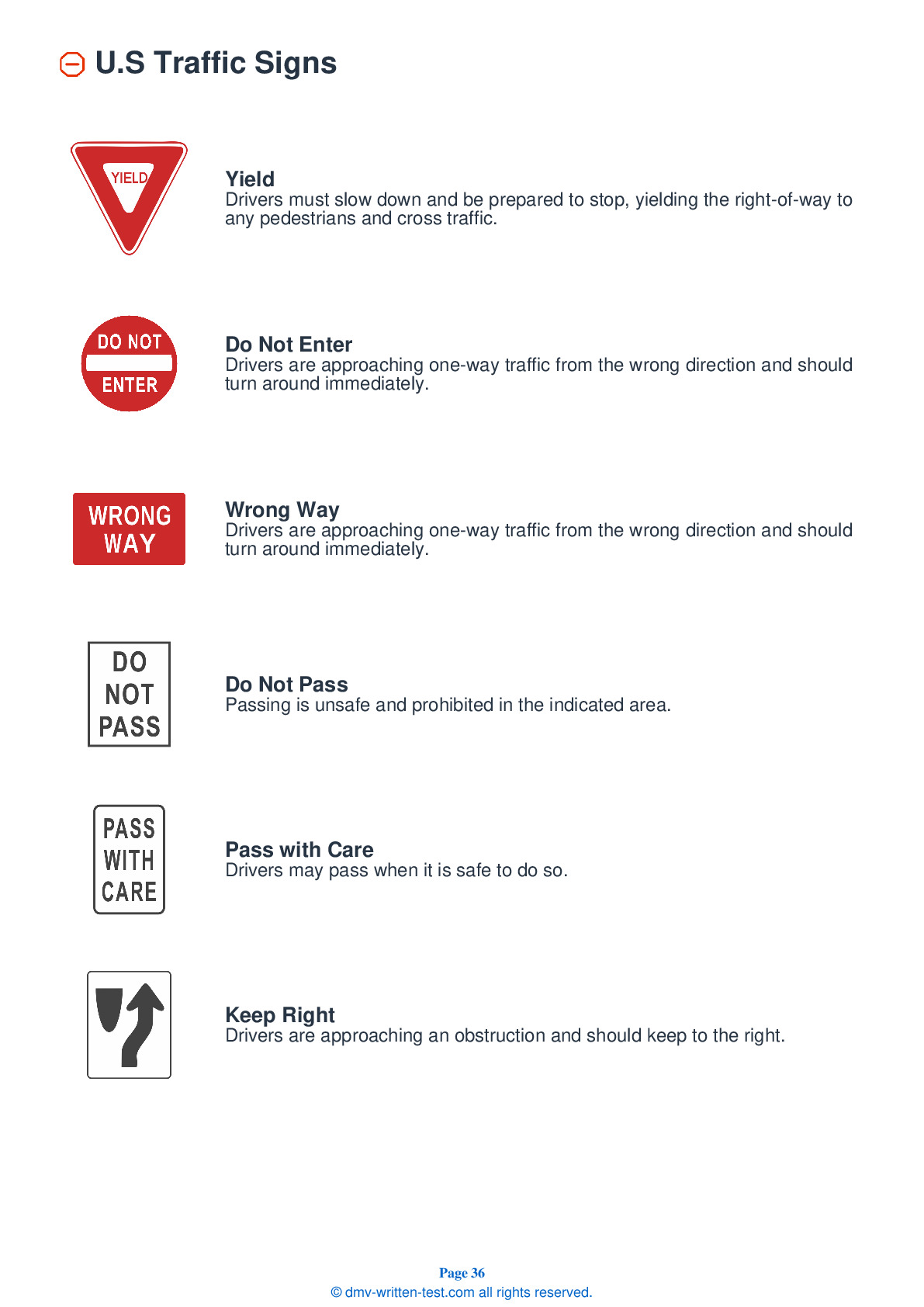2025 Texas Motorcycle Permit Test 8
The following questions are from real DMV written motorcycle permit tests. These are some of the actual permit questions you will face in Texas when getting your motorcycle learners permit. Each motorcycle theory practice test question has three answer choices. Select one answer for each question and select "grade this section." You can find this button at the bottom of the drivers license quiz. For a complete list of questions and answers for Texas please visit https://cheat-sheets.dmv-written-test.com/en/texas/motorcycle.
Number of Tests
Number of Question
Passing Score
1. To control a motorcycle properly, you should:
Explanation
When riding, sit so you are able use your arms to control the motorcycle rather than to hold yourself up. Your arms should be slightly bent when you are holding the handle grips. To help maintain your balance, keep your knees against the gas tank and your feet firmly on the footrests.
2. If riding a three-wheel motorcycle in a group, you should travel in a:
Explanation
While riding in a staggered formation is usually best for a group of two-wheeled motorcycles, three-wheeled motorcycles are too wide to allow this formation. A group of riders on three-wheeled motorcycles should travel in a single-file line.
3. Approved helmets:
Explanation
While some people worry that wearing a helmet may dangerously limit their field of vision, this is not the case. Any approved helmet will let the operator see as far to the sides as is needed for safe riding.
4. Rain suits:
Explanation
High-quality rain suits designed for motorcycle riding will resist tearing and ballooning when a rider travels at high speeds.
5. When riding at night, a motorcyclist should maintain a minimum following distance of:
Explanation




